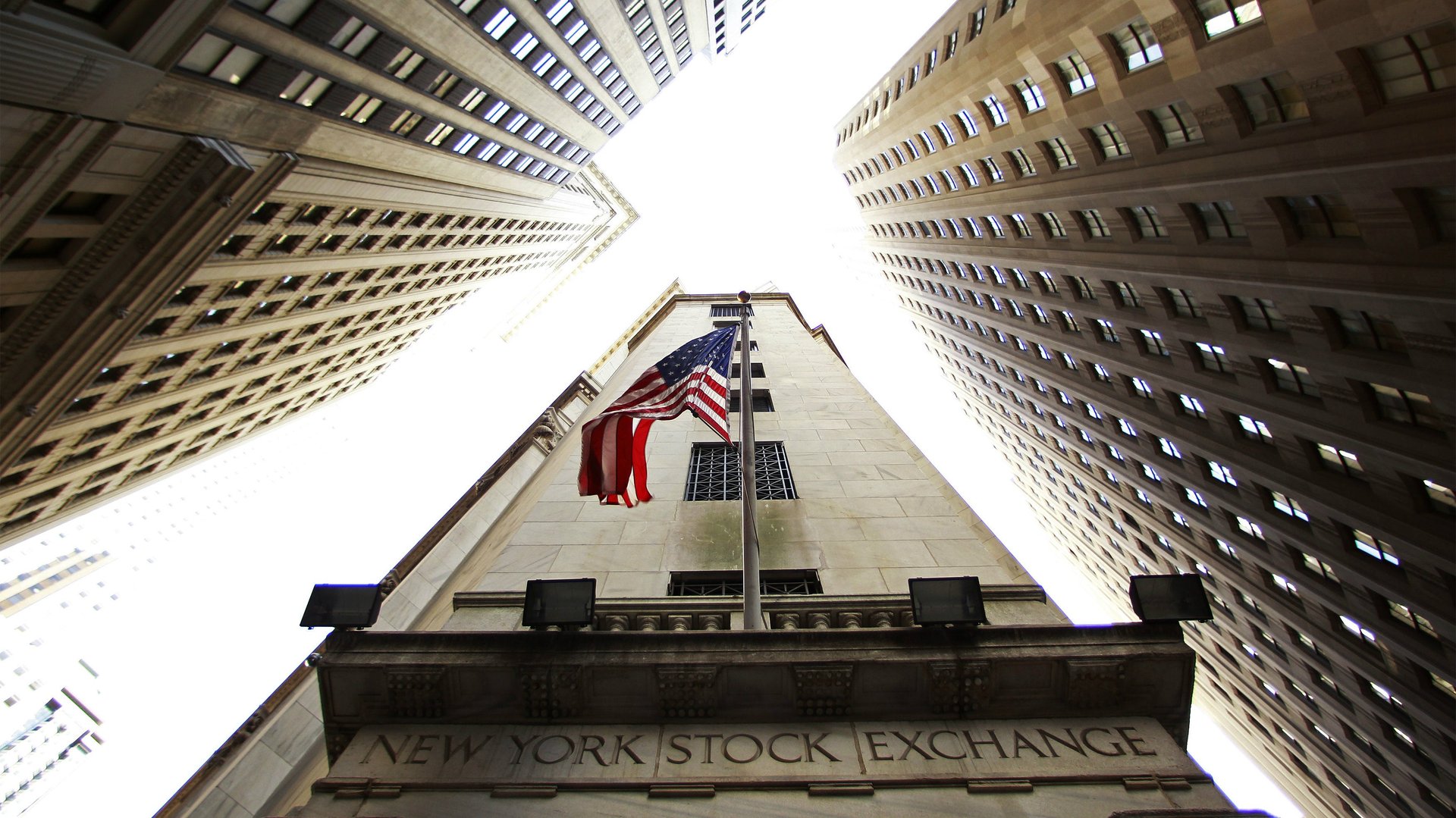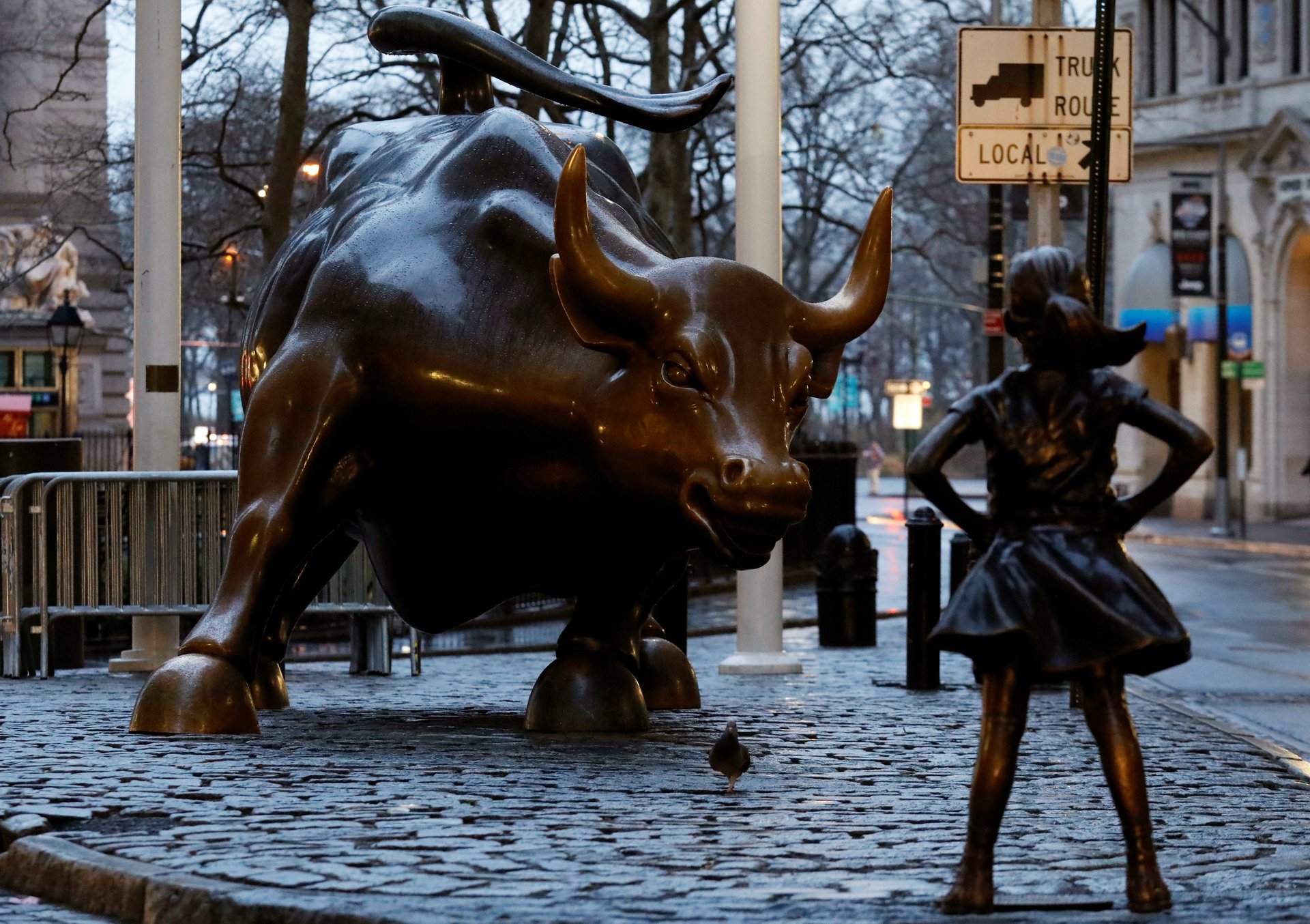Sustainable investing risks becoming a victim of its own success
Sustainable investing is booming. The industry has spawned its own lingo—ESG, SASB, SRI, GRI—dedicated to describing this seemingly moral turn in the finance industry, where money is invested in ways that make the world a better place. After all, it feels good to generate a return while promoting the SDGs (that’s the UN’s sustainable development goals, if you’re wondering).


Sustainable investing is booming. The industry has spawned its own lingo—ESG, SASB, SRI, GRI—dedicated to describing this seemingly moral turn in the finance industry, where money is invested in ways that make the world a better place. After all, it feels good to generate a return while promoting the SDGs (that’s the UN’s sustainable development goals, if you’re wondering).
According to the latest report by the US Forum for Sustainable and Responsible Investment (US SIF), investors now consider environmental, social, and governance (ESG) factors for $12 trillion of professionally managed assets. That’s a 38% increase from 2016. It’s also out of a total universe of $46.6 trillion of professionally managed assets in the US. That means that almost a quarter of assets could now be considered “sustainably” or “responsibly” invested.
These already big numbers are expected to get even bigger. A recent HSBC survey of more than 1,700 investors and issuers around the world showed that 60% of investors and just under half of issuers have an ESG strategy. The proportion for both rises to more than 80% in Europe. Asset managers around the world speak eagerly about a wave of millennial investors ready to pour their money into sustainable investments. And this isn’t just virtue signaling: More people now accept the conclusions of academic studies that say socially responsible investing doesn’t sacrifice financial returns.
If this all sounds too good to be true, that’s because it might be.
The world of sustainable and socially responsible finance lacks structure and standards. Without these, there’s little to protect against “greenwashing”—firms and fund managers saying they are adhering to ESG principles without following through on them. There are no firm definitions of what counts as ESG investing, which allows many to make it so expansive that it becomes nearly meaningless. (The EU is trying to combat this.) The industry needs a gatekeeper.
Integration or impact?
The confusion begins with the terminology. Swiss bank UBS surveyed more than 5,000 of its wealthiest clients and found little understanding of the differences between the three main approaches to sustainable and socially responsible investing: exclusion, integration, and impact investing. 1 Plus, less than 40% of respondents said they had sustainable investments in their portfolio.
There’s also confusion in an area supposed to bring clarity: ESG scores. There are more and more organizations scoring and ranking companies according to various ESG criteria, such as Sustainalytics, that fund managers can use to create a sustainable portfolio. But methodologies vary widely, so companies can get contradictory scores. For example, the Wall Street Journal (paywall) found that Tesla was considered the best among global car companies by MSCI but the worst by FTSE.
Also, ESG investing often just lumps a bunch of disparate issues together. Many investors would consider good governance a standard requirement for their investments. Environmental and climate issues are becoming more easily accessible investment opportunities given the growth in green assets (paywall). The “S,” for social, is harder to figure but offers the most potential for impact.
Erika Karp is skeptical of ESG rankings and the reports that put huge numbers on the size of the sustainable investing industry. “I always worry, is there an overstatement about what’s really going on?” she said about these reports. The quality of analysis used to determine if an investment is sustainable is “too light” and, in general, the data used by the industry is poor, she added.

That’s why Karp founded Cornerstone Capital. After spending more than a decade at UBS, in 2013 she created the impact investment advisory firm in New York. As well as managing money for clients and advising them on sustainable investment strategies, Cornerstone puts a lot of its energy into due diligence on the asset management industry as a whole. Its goal is to make sure that when a fund manager says their fund meets specific environmental or social goals, it really means it.
It’s not the only group vetting sustainability credentials. There is the Sustainability Accounting Standards Board (SASB), the GRI’s sustainability reporting standards, and the Task Force on Climate-related Financial Disclosures, which all provide companies standardized reporting frameworks to improve disclosures and data availability on sustainability for investors. None of this is mandatory and, what’s more, there’s no equivalent for fund managers that claim to practice ESG investing. With no standardized rules, there are no penalties for greenwashing.
Cornerstone is setting itself up to be the industry’s watchdog. It sees itself as an “arbiter of excellence,” giving fund managers a reliable stamp of approval.
Subversive sustainability
Karp has worked on Wall Street for more than 25 years. At UBS, the socially responsible investing team was incorporated into her team, global sector research. “What I realized is that this is not just tree-hugging and ideological,” Karp said. “It’s critical research to really understand some fundamental long-term drivers.”
Ten years ago, Karp kept this revelation mostly to herself. Back then, the culture of finance still believed that investors would have to give up returns to do what’s right. “I had to be subversive,” Karp said. “I learned the language of ESG but I used the language of finance.” As chair of the investment review committee, she would slip in questions about governance and energy efficiency, but without drawing attention to the fact that she was explicitly talking about sustainability.
Though UBS is now a leader in ESG issues, for Karp the bank wasn’t moving fast enough. “As I learned more, it became more urgent,” she said. “We need to do more now. We need to accelerate the flow of capital towards impact, towards the world’s greatest challenges. Sometimes you need to be disruptive from the outside.”
It’s a “dangerous time” for ESG investing, Karp said, as products proliferate with little oversight. To make her point, Karp cited one of the highest-profile areas of ESG investing: gender-equality funds.
Two-and-a-half years ago, State Street launched its gender diversity index ETF, with the ticker SHE. To celebrate the first anniversary of the fund, the firm installed the “Fearless Girl” statue on Wall Street, staring down the iconic “Charging Bull.” Its success—the fund has attracted $350 million in assets—encouraged similar ETFs, but the narrow focus of State Street’s fund has drawn criticism for only investing in US companies based on the gender diversity of their boards and senior leadership.

Karp fears this “superficial” methodology doesn’t provide sufficient insight for investment, and if these sorts of funds underperform they will undermine the broader case for gender-lens investing. Gender equity funds have improved since State Street’s, with newer ETFs based on far more comprehensive indexes created by Equileap, the foremost organization providing data on gender equality on the business world, that uses 19 different criteria.
However, these funds are still examples of how hard it can be to meet certain objectives. A new online tool to assess how well funds perform on gender diversity gave surprisingly low scores to funds specifically created to screen for gender diversity. Even with improved methodologies it can be hard to identify the right companies to invest in given the constraints many investors face such as jurisdiction or market size.
George Serafeim, a professor at Harvard Business School and one of the world’s leading experts in sustainable finance, warns that the ESG investment industry is developing in “a very messy way.” This is because of the lack of generally accepted standards on how to measure, analyze, and communicate the ESG performance of a company and, by extension, of an investor buying shares in it.
“There are now stronger incentives for asset managers to greenwash,” Serafeim said. “ESG cannot be just a marketing tool to attract capital. Right now there is a false sense of security or satisfaction if an investor buys an ESG product that might not be what the investor thinks it is.”
The problem is that demand for ESG products has now outpaced what asset managers have the capabilities to provide. Take climate change as an example. There are more and more ways to assess the carbon exposure of a company or a portfolio, but “low carbon” isn’t the same thing as a company or portfolio that’s ready for the transition necessary to meet climate goals, Serafeim warns. These require different metrics and analysis. The same applies for financial products. “With the exception of a few innovators, most asset managers do not even measure in any meaningful way the impact from their capital allocations and engagement activities,” he said.
Making the grade
For its part, Cornerstone sets strict requirements for funds to be deemed worthy of its platform. The firm only offers about 80 funds to its clients, Karp said. Cornerstone doesn’t only want evidence that a fund meets its objectives but also that the asset management firm behind it also shares these goals. This is an important distinction, because it discourages ESG teams from being isolated from the rest of the firm. Goldman Sachs, for example, has been criticized for partnering with Just Capital on its new socially conscious fund, but blocking environmental and social justice reforms when voting its shares in companies owned by other parts of the bank.
Cornerstone is looking for transparency, accountability, consistency, and incentive structures that promote good practices in the fund-management industry. It goes directly to funds to examine the inner workings of their investment strategies. Rather than being turned away as a nuisance, most companies are willing to respond. “We want to potentially bring clients to them,” Karp said. “So it doesn’t make any sense for them not to respond.”
Cornerstone must be convinced that a fund is genuinely making a difference towards the goals it sets. That means it doesn’t just buy shares in companies related to a certain industry. For example, a fund dedicated to fair and sustainable water access can’t simply hold a bunch of large public utility companies that don’t specifically derive their revenues from water.
Cornerstone has about $1 billion in assets under management. While this money is directed by the clients’ values, the firm tries to make sure that its impact goals are met by putting money across different asset classes, not just equities. “ESG analysis is a research discipline that allows for any type of investing you want,” Karp said.
This is more challenging than building an equity index and launching an ETF tied to it. One of Cornerstone’s recent research papers is about how to invest in racial equality. The report aims to identify ways that investors can create durable household wealth for people of color to combat centuries of systemic oppression. In the US, the average black household has $17,000 in wealth—one-tenth of the average white household’s wealth.
Cornerstone starts by breaking down the main sources of inequality: income inequality, access to affordable housing, and access to capital. From there, it highlights examples for each asset class (equity, fixed income, cash, and alternative investments) that combat each of these inequalities. For example, buying shares of companies that support pay equity, excluding investments in companies with predatory lending practices, supporting affordable mortgage products and private equity funds that invest in small businesses owned by people of color, investing in impact-oriented municipal bond funds, or parking cash in community banks.
As a relatively small asset manager, for now Cornerstone expects its bark to be more aggressive than its bite. Early next year, however, it plans to launch a mutual fund to improve accessibility to impact investing. In an increasingly crowded field of funds making similar pitches, it hopes to stand out by demonstrating a commitment to impact investing that treats it as “a truth, not a trend.”